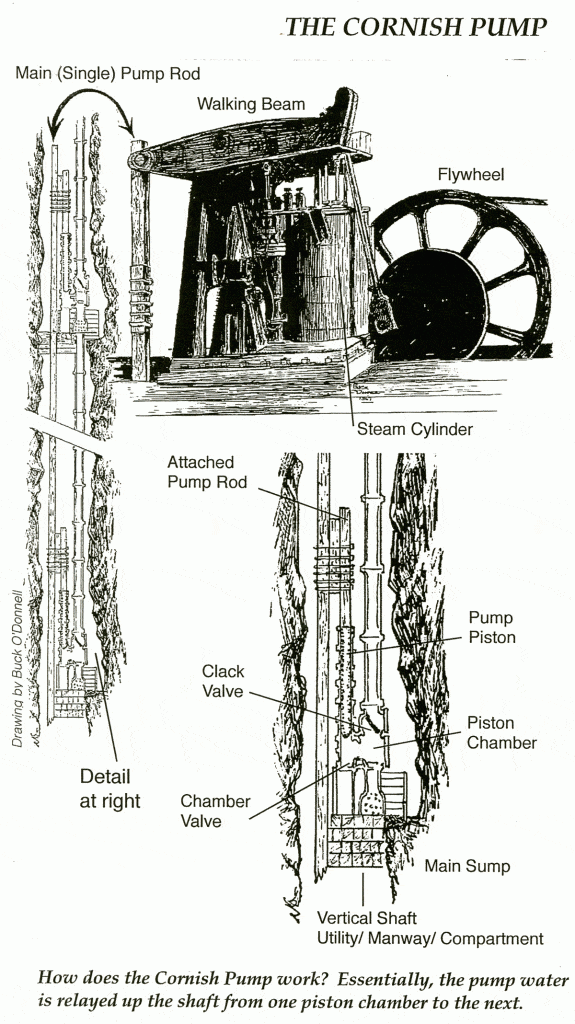The Ontario Mine, prospected in 1872, was an incredibly successful silver mine in Park City thanks to the help of one very special machine. At $100 per ton, the ore near the mine’s surface was valuable—but the ore deeper in the mountain could consistently bring $150 per ton. The problem was, the deeper the mine went, the more water flooded into the tunnels.[1]
In 1881, owner George Hearst commissioned Cornish workmen in Philadelphia to construct a huge pump to take water out of the mine. The pump was modeled after steam engines used to remove water from flooded lower levels in the mines of Cornwall, England, so it was thusly named the “Cornish Pump.”[2]
While it was being put together, miners constructed Mine Shaft No. 3 to house the Cornish Pump. The pump’s parts were transported to Park City and re-assembled on-site. Once reassembled, the enormous flywheel measured 30 feet in diameter and weighed 70 tons. The pump’s construction and installation cost $250,000, but due to the Ontario’s success, that sum was more than paid off soon after it started operating.[3]

Credit: Park City Historical Society and Museum, PCHS Research Library Collection
Plumbing the depths of the Ontario’s 1000-foot level, the Cornish Pump brought about four-million gallons of water to Drain Tunnel No. 1—at the 600-foot level—per day, allowing miners to find valuable ore deeper underground for years to come.[4]
Despite the Cornish Pump’s success, legend has it that on a particularly cold day in the mid-1880s, it stopped pumping—it was frozen.
After waiting to see if the pump would force itself back into operation, and with water rising in the mine shaft, the miners finally decided to call in a Cornish mechanic. The mechanic looked over the pump, climbed up the enormous flywheel, took a sledgehammer, and swung down one single blow. Just like that, the pump came back to life.
The mechanic billed the mine office a grand total of $100 for his work— a hefty sum for such a simple act. Incensed, they demanded an itemized bill for his services. The mechanic then replied: “For hitting the flywheel with the hammer, 50 cents; for knowing where to hit it, $99.50.”
The legend concludes that he received the full sum.[5]
Though this story about a mechanic charging exorbitant fees may or may not be true, the Cornish Pump’s initial construction was costly, and maintaining its operation with upkeep and fuel was expensive. But thanks to the access to de-watered tunnels and drifts the pump provided, the Ontario mine didn’t disappoint with the scores of ore it produced.
To learn more about the Ontario Mine
and the Cornish Pump, visit the Park City Museum and see our scale-model
exhibit of the Ontario, including the Cornish Pump with moving flywheel and
pump rod. The Museum is open Monday through Saturday from 10 a.m. to 7 p.m. and
on Sunday from noon until 6 p.m.
[1] Moench, Robin. “Cornish Pump: The Mechanical Monster that Uncovered Park City’s Sunken Treasure.” Park City Lodestar: Winter 1987, pages 14-16.
[2] “Report of the Ontario Silver Mining Co. from April 1, 1881 to November 30, 1883.”
[3] Ibid.
[4] Ibid.
[5] Recounted from several publications, including Robin Moench. “Cornish Pump: The Mechanical Monster that Uncovered Park City’s Sunken Treasure.” Park City Lodestar: Winter 1987, pages 14-16.